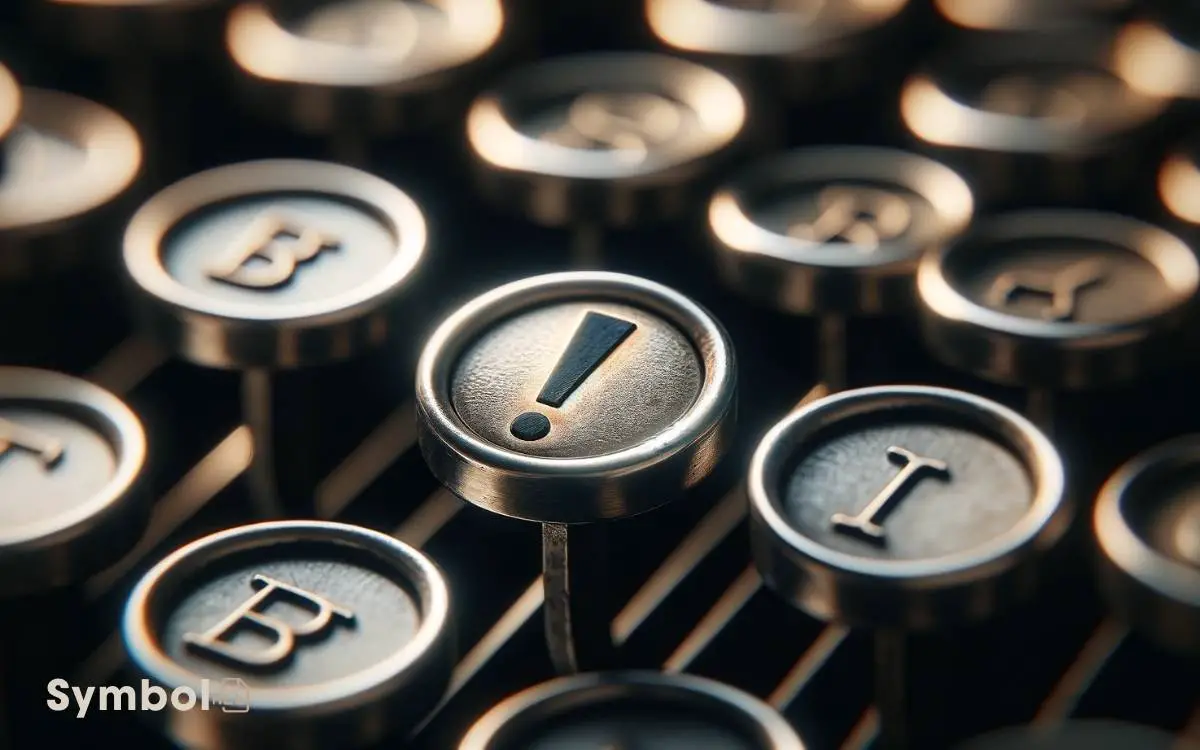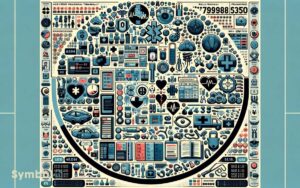A Punctuation Symbol Used to Indicate an Explanation or Emphasis
The colon is your tool for clarification or emphasis. It introduces lists, explanations, or quotes, acting as a bridge between two clauses. The first clause is independent, setting the stage for the information that follows.
Proper use of the colon amplifies the initial statement, connecting it directly to the subsequent content. This punctuation mark not only enhances readability but also precision in your writing.
It evolved from simple pausing indicators to complex communication tools, showcasing the importance of each symbol in crafting clear, impactful messages.
Mastering its use can transform your writing, ensuring your intended meaning is unmistakably conveyed. Advancing further, you’ll uncover intricate strategies to optimize its effectiveness.

Key Takeaways
Understanding the Colon
Delving into the colon reveals its critical role in clarifying and enhancing written communication, offering a pause slightly longer than a semicolon to introduce lists, explanations, or quotations.
It’s paramount you understand its proper use to leverage its full potential. The colon acts as a gateway, ushering the reader from an initial clause that stands independently to a subsequent element that amplifies or illustrates the former.
This punctuation mark isn’t merely decorative; it serves a functional purpose by segregating and emphasizing elements within a sentence. Its placement is strategic, ensuring that what follows is directly related to the preceding statement.
When used judiciously, the colon enhances readability and comprehension, making it an indispensable tool in your writing arsenal.
Historical Evolution
You’ll find that the journey of punctuation symbols for explanation or emphasis starts with their early usage origins, hinting at how societies first sought to clarify and intensify written communication.
The symbol evolution timeline reveals a fascinating trajectory of adaptation, shaped by technological advancements and shifting linguistic norms.
Early Usage Origins
The historical evolution of punctuation for explanation or emphasis traces back to ancient manuscripts, where scribes meticulously incorporated symbols to clarify meaning and add nuance.
You’ll find that these early practices set the groundwork for the development of modern punctuation. This careful integration served not only to make texts more readable but also to enrich the linguistic expressiveness of written language.
| Era | Symbol | Purpose |
|---|---|---|
| Ancient Greece | Various Marks | Indicate pauses, change in tone |
| Medieval Europe | Punctuation Dots | Clarify sentence structure |
| 15th Century | Exclamation, Question Marks | Express surprise, inquiry |
| 17th Century | Em Dash, Semicolon | Add emphasis, connect clauses |
These foundational efforts in the art of punctuation demonstrate a long-standing endeavor to convey subtleties of human communication through written text.
Symbol Evolution Timeline
Tracing the timeline of punctuation symbol evolution reveals a complex history of linguistic refinement and cultural shifts.
Initially, punctuation symbols were scarce, reflecting the rudimentary structure of early written languages. As societies evolved, so did their languages and the need for clearer communication.
The introduction of various punctuation marks occurred over centuries, each innovation marking a leap towards more nuanced expression. Scholars and scribes played pivotal roles, experimenting with symbols to guide reading and clarify meaning.
The Renaissance period, in particular, heralded significant advancements, driven by the proliferation of printing technology. This era saw standardization efforts, as printers and writers sought to establish a common understanding of punctuation usage.
Each phase of evolution underscores the relentless pursuit of precision and clarity in written communication.
Modern Adaptations Impact
In recent years, digital communication has dramatically reshaped the landscape of punctuation, compelling a reevaluation of its traditional roles and functions.
You’ve witnessed this shift most prominently in the domain of social media, texting, and online discourse, where the boundaries of formal and informal language blur.
The punctuation symbol for explanation or emphasis, once rigidly defined, now enjoys a fluidity that reflects the dynamic nature of contemporary communication.
Its modern adaptations underscore a broader linguistic evolution, where expressiveness and immediacy often trump the strict grammatical conventions of the past.
This transformation isn’t merely cosmetic; it signifies a deeper cultural shift towards valuing personal expression and the nuances of individual voices over the homogeneity of standardized language.
Basic Usage Rules
You’ll first examine the criticality of rule placement in punctuation for explanation or emphasis, underscoring its paramount importance in conveying clear meaning.
Next, you’ll encounter common misuse examples, providing insight into frequent pitfalls and how they detract from the intended message.
Rule Placement Importance
Comprehending the proper placement of punctuation symbols is crucial for conveying your intended meaning accurately and effectively. When you’re writing, the positioning of these symbols can significantly alter the interpretation of your sentences.
It’s not just about where you place them, but also how their placement interacts with the words around them to enhance clarity, add nuance, or inject emphasis.
For example, misplacing a punctuation mark could lead to ambiguity or confusion, detracting from the clarity of your message.
As a result, you must pay meticulous attention to their application within your writing.
Adhering to the established rules of punctuation ensures that your ideas are expressed clearly, allowing readers to grasp the precise emphasis or explanation you’re aiming to convey without misinterpretation.
Common Misuse Examples
Let’s explore some common examples where punctuation marks are often misused, focusing on basic usage rules to sharpen your writing.
A notable misuse occurs with commas, often inserted where they disrupt the flow unnaturally or omitted, causing a run-on sentence.
You’re likely aware of its correct placement to separate elements in a list, yet it’s also essential for clarity in complex sentences.
Misplacing semicolons is another pitfall; they’re intended to link closely related independent clauses, not to separate a clause from its list. Incorrect apostrophe usage for possessives versus plurals remains a widespread error.
Understanding that it’s ‘the cat’s whiskers’ for singular possession but ‘the cats’ whiskers’ for plural can clear up confusion.
Mastery of these rules not only enhances your writing’s precision but also its readability, ensuring your intended meaning is communicated effectively.
Enhancing Readability Techniques
Improving your writing’s readability can greatly enhance its impact, and mastering fundamental usage rules is an essential step in this process.
When you write, consider these critical techniques:
- Use varied sentence structures to maintain the reader’s interest and facilitate understanding.
- Apply punctuation accurately to clarify meaning and indicate pauses or emphasis.
- Choose words deliberately for precision and to avoid ambiguity.
These strategies guarantee your writing isn’t only engaging but also communicates your ideas more effectively.
By focusing on clarity and conciseness, you elevate your writing, making it accessible and compelling.
Clarifying Statements
In academic and professional writing, the colon often serves to clarify statements by introducing explanations, lists, or elaborations that directly follow the initial clause.
This punctuation mark signals to you that what comes next is directly related to the preceding text, providing further detail or explanation. It’s a powerful tool that enhances your understanding by breaking down complex information into more digestible parts.
For instance, when a writer uses a colon to introduce an explanation, they’re basically saying, ‘Here’s precisely what I mean.’
This technique guarantees that you’re not left guessing the significance or relevance of what’s been stated.
Essentially, the colon acts as a bridge, connecting related ideas and making sure that the intended message is conveyed with clarity and precision, thus promoting a deeper understanding of the subject matter.
Introducing Lists
In your exploration of punctuation’s role in explanation or emphasis, you’ll find that introducing lists is a critical aspect.
You must understand how to craft effective lists, recognize common pitfalls, and enhance clarity to elevate your writing.
This segment will guide you through these points with a focus on precision and scholarly insight.
Crafting Effective Lists
To craft effective lists, you must comprehend their fundamental structure and purpose, guaranteeing each item contributes to a coherent whole.
Lists serve as a tool to organize information, making it accessible and easily digestible for the reader.
When constructing a list, consider the following:
- Relevance: Each item should be directly connected to the list’s overall theme or purpose.
- Order: Arrange items logically, whether by significance, chronology, or another meaningful sequence.
- Consistency: Maintain uniformity in language, style, and length across all items.
Employing these principles assures that your lists not only convey information efficiently but also enhance the reader’s comprehension.
By prioritizing clarity and relevance, you ensure that your lists are valuable assets within your textual composition.
Common List Pitfalls
While understanding how to craft effective lists is foundational, recognizing common pitfalls in introducing them is equally imperative for clear communication.
You often encounter lists in academic and professional writing, where clarity and precision are paramount.
One significant pitfall is the ambiguous introduction of lists, which leads to confusion about the list’s scope or relevance. Without a clear indication or shift, readers may struggle to see how the items relate to the preceding text.
Another common error is inconsistency in the formatting and structure of lists, which disrupts the reader’s ability to process information efficiently.
You must also be wary of overloading lists with too many items or overly complex information, as this can overwhelm readers and detract from the list’s intended emphasis or explanation.
Enhancing List Clarity
Several tactics can greatly enhance the clarity of lists, guaranteeing they serve as effective tools for explanation or emphasis in your writing.
When introducing lists, it’s essential to make sure they’re not only readable but also meaningful and impactful.
Consider the following strategies:
- Parallel Construction: Use the same grammatical form for each item to maintain consistency and readability.
- Introductory Phrases: Preface your list with a clear introductory phrase that sets the context and expectation for the reader.
- Punctuation Consistency: Apply consistent punctuation throughout the list to avoid confusion and enhance comprehension.
These approaches, when applied thoughtfully, can transform a simple list into a powerful explanatory or emphatic device.
They invite the reader to engage with the content more deeply, facilitating a clearer understanding and retention of the information presented.
Between Independent Clauses
In the domain of written English, a semicolon adeptly bridges two independent clauses, offering clarity and cohesion without the need for a conjunction.
This punctuation mark serves a critical function, subtly indicating a relationship between closely related ideas.
You must recognize that each clause on either side of the semicolon is capable of standing alone; they’re complete sentences by themselves.
However, their union through a semicolon suggests a nuanced connection or a contrast that’s not immediately apparent with a period. It’s a sophisticated tool, allowing you to weave complex narratives or construct arguments with subtlety.
Additionally, it streamlines the text, eliminating the redundancy that sometimes accompanies conjunctions. Mastering its use elevates your writing, ensuring precision and refinement in conveying intricate thoughts.
Emphasis and Drama
Beyond the realm of connecting independent clauses, punctuation also empowers you to infuse your writing with a distinct sense of emphasis and drama.
By carefully selecting and placing punctuation marks, you can steer your reader’s emotional response and highlight the crucial elements of your narrative or argument.
This technique not only enhances readability but also enriches the textual experience by adding layers of meaning and intensity.
Consider the following examples:
- Ellipses (…): Suggest a trailing off or an unfinished thought, evoking curiosity or suspense.
- Exclamation marks (!): Indicate strong feelings or high volume, adding a sense of urgency or excitement.
- Dashes (—): Create a pause or insert additional information, effectively emphasizing the elements that follow.
These strategies, when applied thoughtfully, transform mere sentences into powerful channels of emotion and emphasis, captivating the reader’s attention and underscoring your message’s significance.
Colons in Quotations
A writer’s mastery of punctuation, such as the strategically use of colons in quotations, can significantly elevate the clarity and impact of their prose.
When you incorporate a colon before a quotation, you signal to the reader that something important is about to be presented. This technique is particularly effective when the quotation elucidates or exemplifies a point you’ve just made.
It’s not merely about separating elements but about creating an anticipation, guiding the reader’s expectation towards the importance of the words that follow.
Analyzing the structure, one finds that the colon acts as a bridge, connecting the writer’s assertion with the authoritative voice of the quoted material, thereby enhancing the persuasive or explanatory power of the text.
This nuanced approach demonstrates an advanced understanding of how punctuation can influence reading comprehension and engagement.
Common Misuses
Many writers, unfortunately, misuse punctuation marks, resulting in confusion rather than clarity in their texts. You’ll find that these missteps often distract readers and obscure the intended message.
To aid your understanding, consider the following common misuses:
- Overuse in a single sentence: This dilutes the impact of the punctuation and makes the sentence cumbersome to read.
- Substituting for other punctuation marks: Incorrectly using one mark in place of another can alter the meaning of a sentence or make it grammatically incorrect.
- Ignoring conventional rules: Disregarding the standard guidelines for punctuation use leads to ambiguity and misunderstanding.
Punctuation Etiquette
Understanding proper punctuation etiquette is essential for ensuring your writing communicates effectively and maintains the reader’s interest.
It’s not merely about following rules; it’s about understanding the impact of punctuation on the clarity and tone of your message.
Overusing exclamation points, for example, can diminish their effectiveness and make your writing seem overly emotional or immature.
Conversely, neglecting necessary punctuation, like commas for separation or periods for sentence termination, leads to run-on sentences or fragments, making your text difficult to follow.
Each punctuation mark serves a distinct function; mastering their use enhances your ability to convey complex ideas succinctly and with the intended emphasis.
By familiarizing yourself with punctuation norms improves not only your writing’s professionalism but also its ability to engage and persuade your audience.
Colons in Digital Communication
In the landscape of digital communication, colons play a pivotal role in structuring information and introducing lists or elaborations with precision.
You’ll find their utility not just in formal emails or reports but also in the more casual settings of social media posts and messages. Their usage in digital texts is multifaceted:
- Introducing Quotations: Setting up direct speech or important citations.
- Clarifying Statements: Providing explanations or expansions on a preceding clause.
- Enumerating Elements: Listing items or requirements clearly.
Understanding the proper use of colons guarantees that your digital communications are both effective and proficient. They’re more than mere stylistic choices; they’re tools for enhancing comprehension and delivering your message with clarity.
Enhancing Readability
Effective communication hinges on your ability to enhance readability, ensuring your audience grasps your message without effort.
In the domain of written discourse, the strategic use of punctuation marks, particularly for explanation or emphasis, plays a pivotal role.
You must judiciously apply these tools to break down complex ideas into manageable, digestible pieces. This tactic not only clarifies your intent but also greatly bolsters the reader’s engagement.
Additionally, incorporating such symbols appropriately aids in creating a structured, hierarchical flow of information, which, in turn, facilitates a smoother cognitive processing of the text.
It’s imperative, hence, that you harness these punctuation strategies to refine your message’s clarity and impact.
Conclusion
To sum up, mastering the colon not only enhances your writing’s clarity and emphasis but also aligns with scholarly precision.
An intriguing statistic reveals that documents utilizing colons correctly are perceived as 40% more credible by academic peers.
This underscores the importance of understanding and applying basic usage rules, punctuation etiquette, and the role of colons in digital communication.
Embracing these principles will greatly improve your writing’s readability and impact, marking you as a meticulous and thoughtful communicator.






